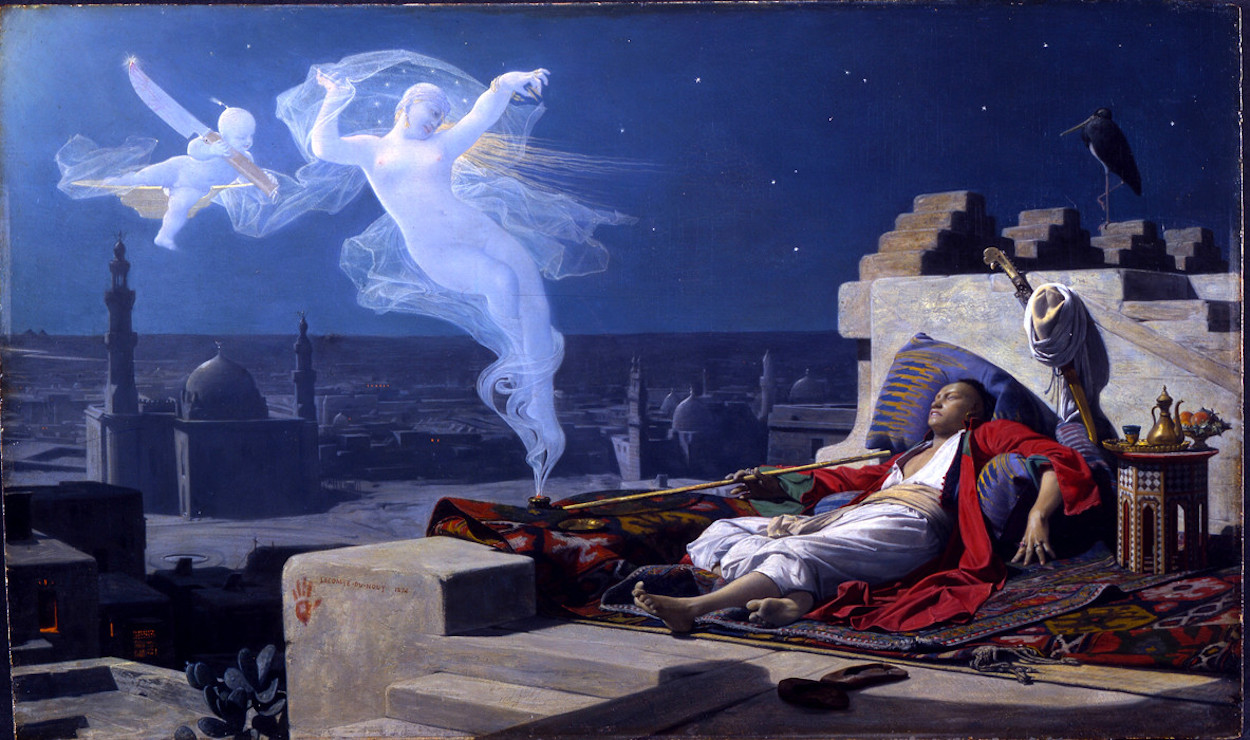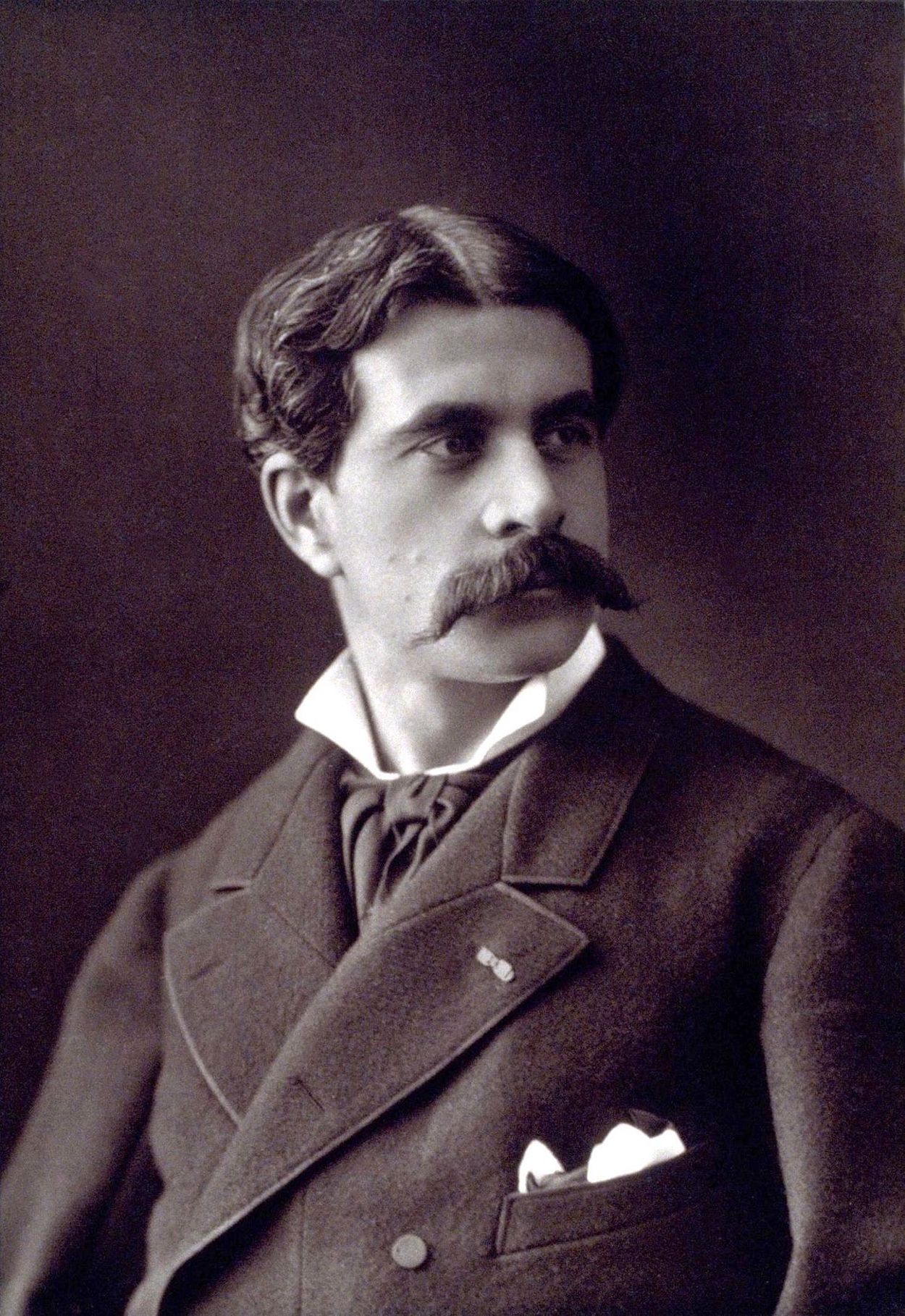This painting depicts a eunuch who wanted to marry a harem slave. He experienced a vision of her while smoking his opium pipe, but her little companion holding a knife dripping with blood reminds us that the eunuch's anatomy precludes the fulfillment of his dream. The outline of a hand next to the signature is a khamsa, a symbol used to ward off evil.
This painting was inspired by Charles Montesquieu's Persian Letters, published in 1721. The book recounts the experiences of two Persian noblemen, Usbek and Rica, who are traveling through France. Usbek leaves behind five wives (Zashi, Zéphis, Fatmé, Zélis, and Roxane) in the care of a number of black eunuchs, one of whom is the head or first eunuch. During the trip and their long stay in Paris, they comment, in letters exchanged with friends and mullahs, on numerous aspects of Western Christian society. Over time, various disorders surface back in the seraglio, and beginning in 1717 the situation there rapidly unravels. Usbek orders his head eunuch to crack down, but his message does not arrive in time, and a revolt brings about the death of his wives, including the vengeful suicide of his favorite, Roxane, and, it appears, most of the eunuchs.
This painting has been suggested by one of our users, Jay. Thanks! :)
More on Europeans' fascination with the Near East you can read here.


 Jean Lecomte du Nouÿ
Jean Lecomte du Nouÿ